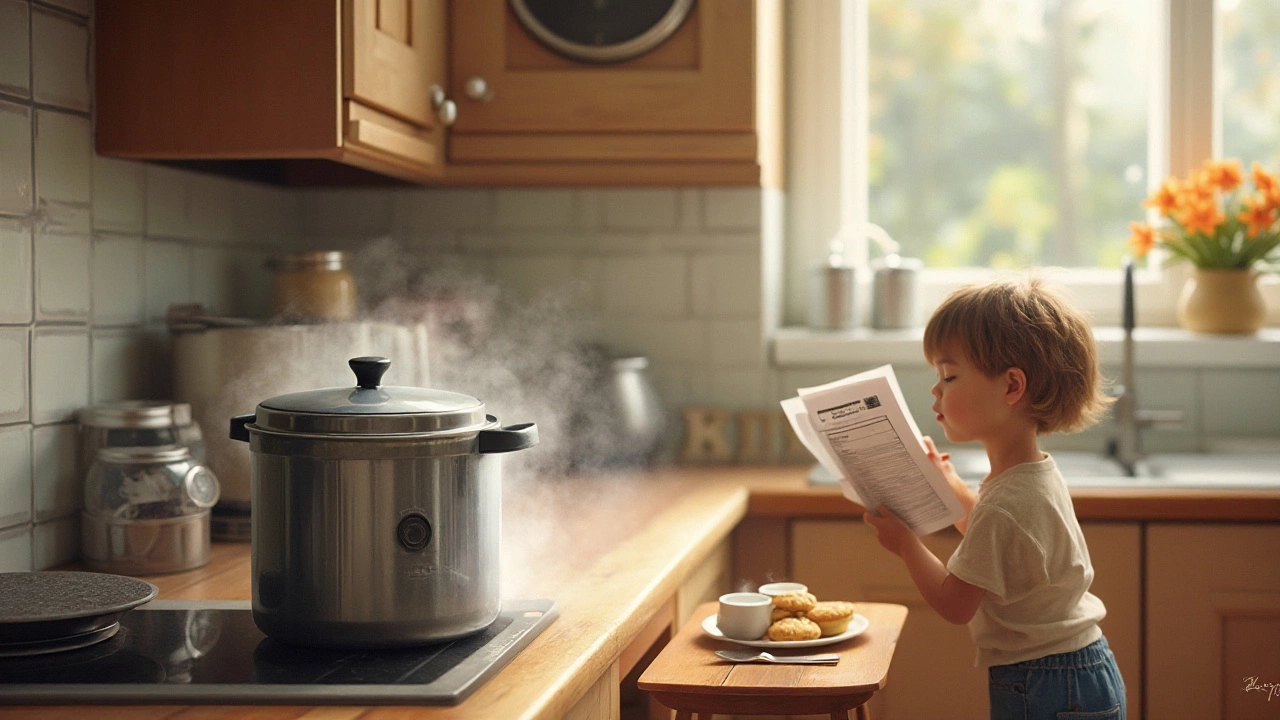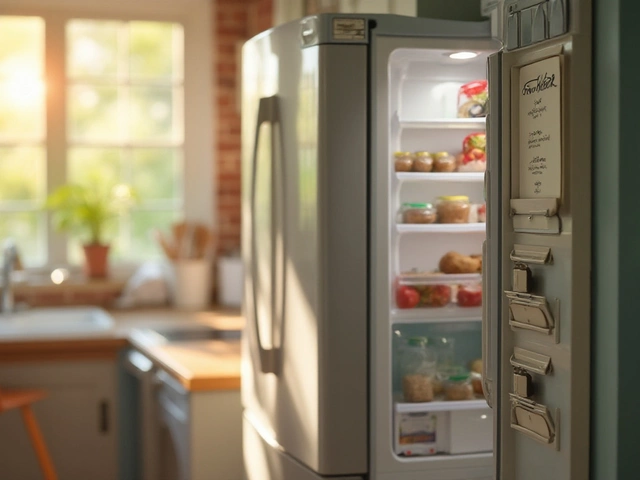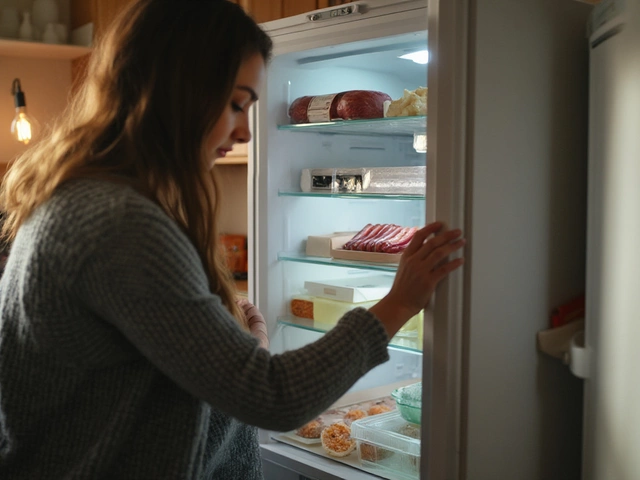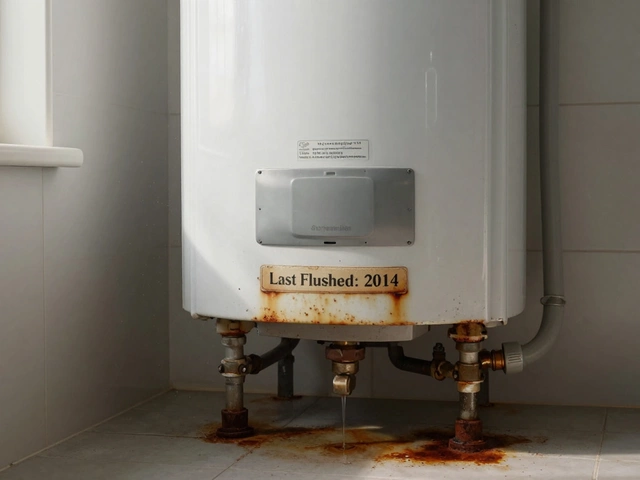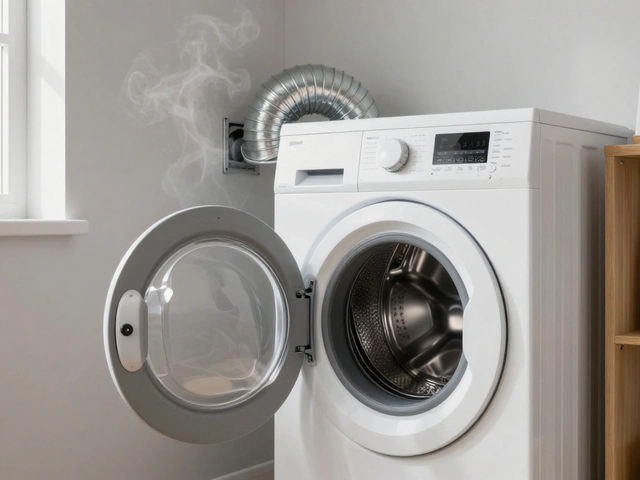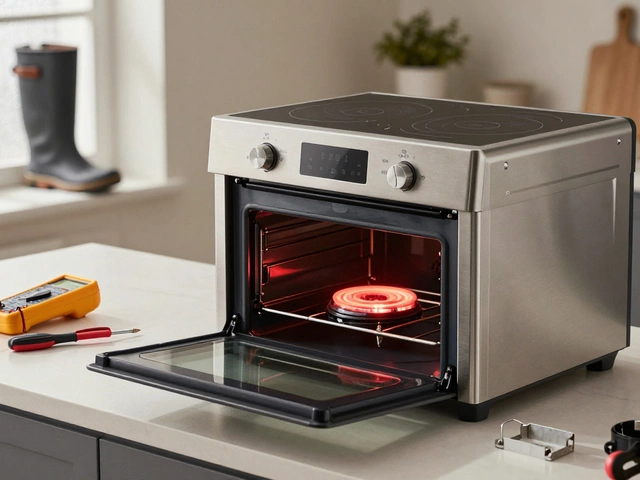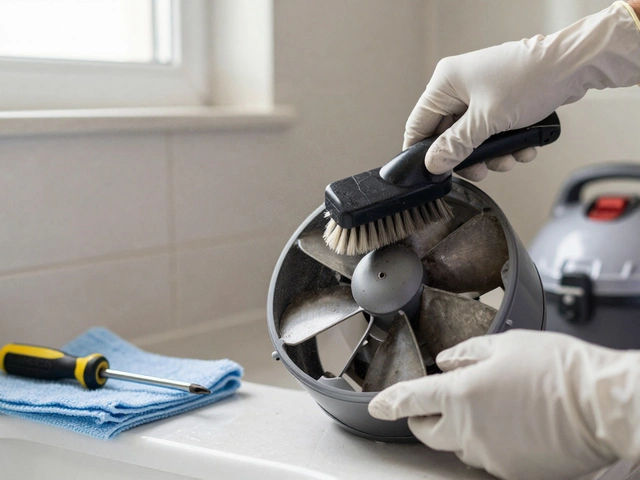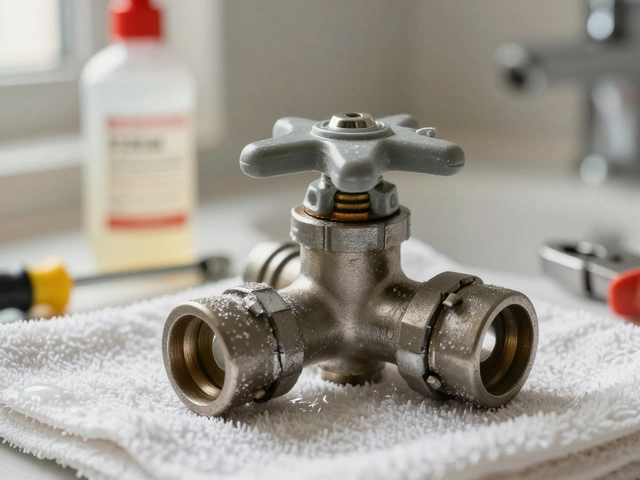Pressure cookers are marvels of modern kitchen technology, transforming cooking time and bringing out rich flavors with ease. Yet, like all appliances, they come with their set of challenges. Possibly you've noticed steam starting to escape prematurely or perhaps your stew isn't cooking as quickly as it used to.
Before you decide to replace your trusty pressure cooker, a deeper dive into its common problems might just offer you the solutions you need. From understanding why steam is leaking to spotting early signs of pressure build-up issues, knowing what to look out for can save time and enhance your cooking experience. With some easy maintenance tips, you can get right back to crafting delightful dishes with confidence.
- Understanding the Basics
- Steam Leaks and Their Causes
- Slow Cooking Times
- Pressure Build-Up Failures
- Maintenance Tips
- When to Seek Professional Help
Understanding the Basics
When it comes to pressure cooker problems, the best approach is often understanding what these kitchen powerhouses are all about. The principle of pressure cooking is both ancient and simple. It involves trapping steam produced by boiling liquid, which increases the pressure inside the pot and, subsequently, increases the boiling point of the liquid. This elevated temperature cooks food faster. The genius of the whole setup is in the containment of steam, which is where the magic happens, producing flavors that traditional cooking methods might take hours to achieve.
The core components of a pressure cooker include the outer shell, a sturdy lid, and the sealing ring that keeps everything airtight. You’ve got valves here too, often known as the regulator, which maintains the desired pressure inside, and the release valve, which allows excess pressure to escape to prevent explosions. Interestingly, these contraptions, despite their simple composition, have been heralded by culinary experts and home cooks alike, changing the game for weekday dinners and special occasions. It’s fascinating how what seems like a high-tech invention actually dates back centuries to when steam pressure was a new frontier.
“Pressure cookers are an investment not just in cooking speed, but in flavor quality,” wrote renowned culinary expert Harold McGee in his book 'On Food and Cooking.'
Getting to grips with what each part does individually is essential, not just for general knowledge but to effectively address any issues you may encounter. For instance, the sealing ring—usually made of silicone or rubber—can become worn over time, leading to steam leaks. Keeping an organized mental toolbox of such information can preempt any major mishaps in the future, such as replacing seals when they show signs of wear. Knowing what to expect and how your pressure cooker should sound and operate can be the difference between a perfectly cooked meal and a kitchen mishap. And yes, for those who appreciate a bit of history sprinkled with their culinary explorations, the pressure cooker's journey from a physics experiment to a convenient household appliance is a tale worth telling at the dinner table.
Steam Leaks and Their Causes
Steam escaping from your pressure cooker can be a source of anxiety, but it is a problem many users encounter. The primary culprits for such leaks are often related to age, misuse, or a straightforward oversight. One of the most common causes is the sealing ring. Over time, the rubber loses its elasticity and becomes less effective at maintaining a tight seal. Kinks or tears in the ring, often due to repeated use and high temperatures, make it impossible for the cooker to fully pressurize.
Another issue that plagues many pressure cookers is incomplete closure. Whether due to haste or unfamiliarity, not locking the lid properly is a frequent mistake. Each model may vary slightly in its locking mechanism, and understanding yours can prevent this error. It might seem simple, but ensuring both the lid and handle are securely aligned is crucial. A clean lid rim is equally important, as even small food particles can prevent a full seal, leading to a frustrating leak.
Checking the Vent Pipe
The vent pipe should never be overlooked. This component is designed to release excess pressure safely, but it is susceptible to blockages. This blockage can be the result of food particles like rice or pasta foam that have escaped cooking. A simple way to check the vent pipe for clogging is to blow through it, ensuring there's no resistance. Make it a routine cleaning step to avoid steam leaks.
"A well-maintained pressure cooker can last 20 years or more with proper care," says Kitchen Appliance Monthly.
Incorrect pressure settings are another factor contributing to steam leaks. When adjusting settings, it is easy to mistake or mishandle the gauge. This becomes problematic if higher settings are used repeatedly, which can stress the components or seal, causing it to wear prematurely. Familiarizing yourself with the manual’s recommended settings for each food type will help alleviate this issue.
Lastly, material fatigue is a genuine concern. The metal body of the cooker, especially around the rim, may warp over time. Warping creates an uneven surface that cannot support a seal sufficiently. Regular inspection and early identification of such distortions can prevent unexpected leaks and the need for costly replacements. To maintain a well-functioning appliance, routinely checking for these signs is key, keeping you on top of any developing problems.
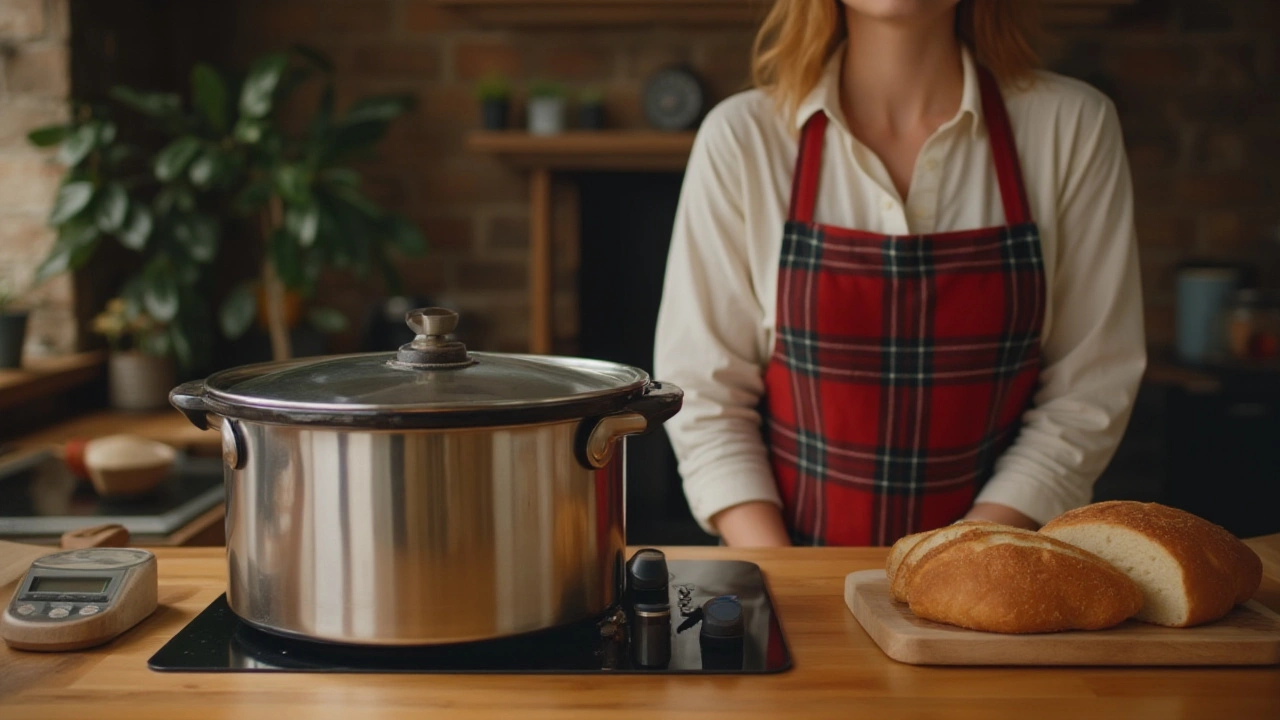
Slow Cooking Times
Experiencing slow cooking times in your pressure cooker can be truly frustrating, especially when you're expecting a quick meal. Typically, this issue arises from a variety of reasons, each tied to how the cooker manages and retains pressure. The most common cause is the failure to reach or maintain optimal pressure levels. This generally happens if the lid isn't sealed properly or if the gasket—a rubber or silicone ring lining the lid—is worn out or incorrectly positioned. A misaligned gasket often allows steam to escape, which essentially delays the cooking process.
Another plausible reason for your cooker to take its sweet time is the water-to-ingredients ratio. An incorrect amount of liquid will affect pressure buildup. Pressure cookers rely on sufficient liquid to generate the steam necessary for pressure cooking. It's crucial to ensure that your recipes have the recommended liquid content. Bear in mind also that if there's excessive liquid, it may take longer for the cooker to reach full pressure. Possibly, you are dealing with a misbehaving pressure regulator. The regulator, responsible for controlling pressure inside the pot, might be blocked or clogged with food debris, preventing accurate pressure readings. Regular cleaning and maintenance of this little component can work wonders.
According to leading culinary expert Harold McGee, "Pressure cooking is a dance between heat, liquid, and time, where even a slight misstep can lead to significant delays."Handling the pressure control valve with care is essential, as its role in dictating cooking time is crucial. Altitude is something few consider when troubleshooting this issue, but higher altitudes decrease air pressure, necessitating an adjustment to cooking times and possibly affecting the overall efficiency of pressure cookers. To find the right balance, you might want to slightly increase the heat or modify the cooking time if you're living in an elevated location.
| Altitude | Pressure Cooker Adjustment |
|---|---|
| 3,000 feet | +5% cooking time |
| 5,000 feet | +10% cooking time |
| 7,000 feet | +15% cooking time |
A final pointer is to check the sealing ring for any food residue or debris that might hinder proper sealing. It can sometimes be as simple as residue getting in the way of creating that perfect seal needed for efficient cooking. Regular checks and cleanliness are the best strategies to combat this issue. As you cook, don't forget to revisit the basics to ensure your trusty pressure cooker is always at its best performance.
Pressure Build-Up Failures
Pressure build-up failures are among the most exasperating issues a cook can face with a pressure cooker. Imagine preparing a meal in the anticipation of a tender and flavorful outcome, only to find that the pressure cooker hasn't lived up to its expectations. The essence of a pressure cooker lies in its ability to trap steam, using it to cook food quickly under high pressure. When this vital process is interrupted, the intended convenience transforms into kitchen frustration.
There are several reasons why the pressure might fail to build up properly. One common culprit is the gasket. This rubber or silicone ring is essential for sealing the cooker, preventing steam from escaping. Over time, gaskets can wear out or become improperly aligned, leading to an ineffective seal. It's crucial to inspect the gasket for cracks, warping, or food residue that might inhibit its function. Replacing the gasket regularly or when you notice signs of wear can mitigate this problem effectively.
Another factor is the pressure valve. This component is responsible for releasing excess steam to maintain optimal pressure levels inside the cooker. If the valve is clogged with food particles or hasn’t been positioned correctly, the pressure cooker cannot build pressure properly. Regular cleaning of the valve can ensure that it functions efficiently. Some pressure cookers also come with a signal indicator showing that pressure has built up. Observing this component during cooking can provide immediate feedback on whether or not the pressure is at the desired level.
Moreover, the amount of liquid used plays a crucial role in pressure build-up. Too little liquid can prevent the necessary steam from forming, while too much can force the steam to escape before the pressure rises adequately. It's a fine balance, perhaps, an art even. Refer to the manual that came with your pressure cooker to find the recommended liquid quantities specific to your model and the type of food being cooked.
Lastly, consider the heat source. Pressure will not build up as needed if the stove's heat isn't strong enough to generate enough steam within a short period. A low, consistent heat is required initially to allow the pressure to rise before reducing the heat to maintain it. This often-overlooked aspect can be the key to solving pressure build-up problems without any additional expenses or stress.
In the wise words of *Cooks Illustrated*, "A properly sealed pressure cooker can reduce cooking times by up to 70%." This simple truth highlights the importance of maintaining your cooker in optimal condition to enjoy its time-saving benefits fully. Understanding these factors not only helps resolve the issue of failed pressure build-up but also extends the life of your appliance, ensuring continued satisfaction in your culinary endeavors.

Maintenance Tips
Taking good care of your pressure cooker ensures it remains a reliable sidekick in your culinary adventures. Regular maintenance isn't just about keeping your cooker looking spanking new, but also about making sure it functions at its best for years. One key aspect to this is cleaning the cooker promptly after each use. Food particles can often stick to the sealing ring or pressure valve, making it vital to clean these areas thoroughly. A mix of warm water and mild detergent usually does the trick, but be sure to check your manufacturer's instructions for specific guidance.
In addition to giving your cooker a regular clean, examining the sealing ring is paramount. The ring can wear out over time, affecting the cooker’s ability to build up pressure effectively. A quick test is to gently tug at the ring; if it stretches out or feels brittle, it may be time for a replacement. Keeping an eye on this component can prevent many common issues like steam leaks and pressure failures. The sealing ring should ideally be swapped out every 12 to 18 months, depending on usage. During high-pressure cooking, even minor cuts or abrasions in the ring can lead to steam escaping.
Another part that requires attention is the pressure valve. Much like the arteries of the human body, these valves control the steam flow and need to be free of blockages to function properly. Cleaning them with a toothpick or a soft brush can help keep them clear of any food residue that may accumulate. In fact, according to one study, regularly cleaned pressure valves can extend the lifespan of your cooker by an additional 2 years.
"Proper appliance maintenance is not just a task; it's an art," says Martin Brown, a home appliance expert.
It's crucial to avoid using harsh chemicals or abrasive scrubbers while cleaning your pressure cooker. These can damage the non-stick lining of the inner pot or cause scratches on stainless steel surfaces, leading to potential sticking of food during cooking and impacting the cooker’s durability. Always use soft cloths and gentle cleaners. When storing the cooker, keep it in a cool, dry place, and it's beneficial to leave the lid partially open to prevent odors from setting in.
If you follow this guide diligently, not only will you have a cooker that's spick and span, but it will also be operating smoothly and efficiently. This meticulous care maximizes safety and minimizes any repair needs. And remember, if any part seems too worn out or if issues persist despite maintenance efforts, it's wise to consult a professional repair service to avoid any safety hazards. Happy cooking!
When to Seek Professional Help
There comes a time when tackling a pressure cooker problem on your own may not be the best choice. One of the first signs that you should consider seeking professional help is if your appliance fails to build any pressure at all despite your best troubleshooting efforts. This could point to a faulty gasket or a damaged pressure valve, both of which require specific technical skills and replacement parts that a professional can assess accurately.
Another scenario is when you notice steam persistently leaking or hissing out from areas that are not the safety release valve. While some steam leakage can be considered normal, continual steam escape often hints at a deeper issue such as a warped lid or a misaligned sealing ring. In some cases, these issues, if left untreated, could even result in kitchen accidents, and it’s always better to err on the side of caution.
If your pressure cooker consistently leaves food undercooked, despite proper settings and timing, it could be due to an internal fault in the thermostat or pressure monitoring mechanisms. Using advanced tools, a professional can dismantle and inspect internal components, saving you the stress and potential harm of meddling with electrical parts.
“Cooking is an art, but precision makes the chef. The same goes for pressure cooker repairs; sometimes precision requires the hands of an expert,” says John White, a renowned appliance repair technician.
And finally, if you've tried replacing components yourself and found the problem persists, consulting with a professional is likely your best bet. It could also save you money in the long run as continually replacing parts without solving the underlying issue may turn out to be more costly. Trust in the experts; after all, they are well-versed in resolving these common pressure cooker problems effectively. They not only have the experience but also the tools and resources to ensure your appliance is repaired to a high standard.

